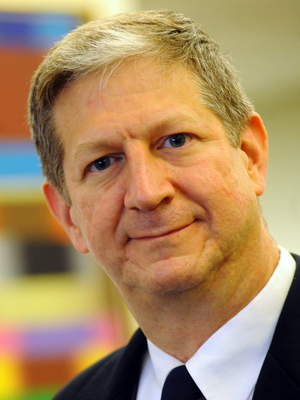
David Keyes
- The Fu Foundation School of Engineering and Applied Science
- Adjunct Professor of Applied Physics and Applied Mathematics
Center Affiliations
Computing Systems for Data-Driven Science Affiliated Member
Foundations of Data Science Affiliated Member
David E. Keyes was the Fu Foundation Professor of Applied Mathematics in the Department of Applied Physics and Applied Mathematics at Columbia University and is a faculty affiliate at several national laboratories of the U.S. Department of Energy. He become the inaugural Chair of the Division of Mathematical and Computer Sciences and Engineering at KAUST, the King Abdullah University of Science & Technology in Saudi Arabia, in 2009.
Keyes graduated summa cum laude with a B.S.E. in Aerospace and Mechanical Sciences and a Certificate in Engineering Physics from Princeton University in 1978. He received his Ph.D. in Applied Mathematics from Harvard University in 1984. He then post-doc’ed in the Computer Science Department at Yale University and taught there for eight years, as Assistant and Associate Professor of Mechanical Engineering, prior to joining Old Dominion University and the Institute for Computer Applications in Science & Engineering (ICASE) at the NASA Langley Research Center in 1993. At Old Dominion, Keyes was the Richard F. Barry Professor of Mathematics & Statistics and founding Director of the Center for Computational Science.
Author or co-author of over 100 publications in computational science and engineering, numerical analysis, and computer science, Keyes has co-edited 12 conference proceedings concerned with parallel algorithms and has delivered over 300 invited presentations at universities, laboratories, and industrial research centers in over 20 countries and 35 states of the U.S. With backgrounds in engineering, applied mathematics, and computer science, and consulting experience with industry and national laboratories, Keyes works at the algorithmic interface between parallel computing and the numerical analysis of partial differential equations, across a spectrum of aerodynamic, geophysical, and chemically reacting flows. Newton-Krylov-Schwarz parallel implicit methods, introduced in a 1993 paper he co-authored at ICASE, are now widely used throughout engineering and computational physics, and have been scaled to thousands of processors.